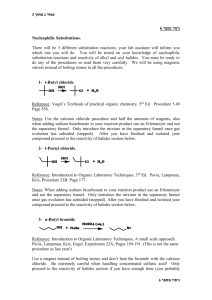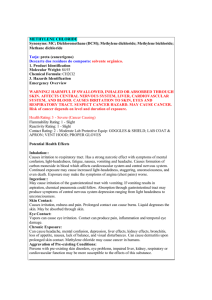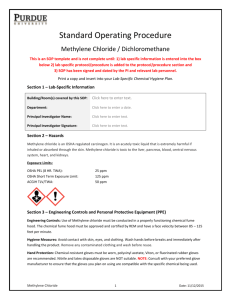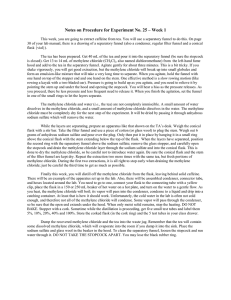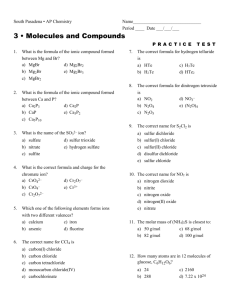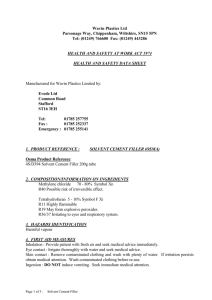experiment 1_instruc..
advertisement
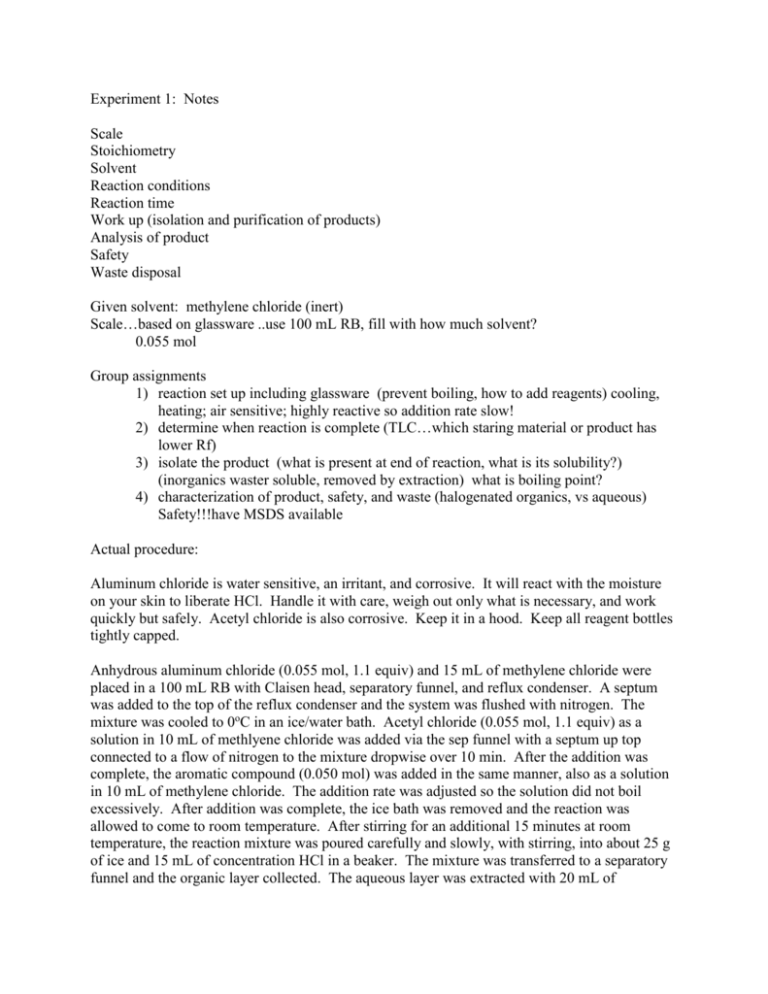
Experiment 1: Notes Scale Stoichiometry Solvent Reaction conditions Reaction time Work up (isolation and purification of products) Analysis of product Safety Waste disposal Given solvent: methylene chloride (inert) Scale…based on glassware ..use 100 mL RB, fill with how much solvent? 0.055 mol Group assignments 1) reaction set up including glassware (prevent boiling, how to add reagents) cooling, heating; air sensitive; highly reactive so addition rate slow! 2) determine when reaction is complete (TLC…which staring material or product has lower Rf) 3) isolate the product (what is present at end of reaction, what is its solubility?) (inorganics waster soluble, removed by extraction) what is boiling point? 4) characterization of product, safety, and waste (halogenated organics, vs aqueous) Safety!!!have MSDS available Actual procedure: Aluminum chloride is water sensitive, an irritant, and corrosive. It will react with the moisture on your skin to liberate HCl. Handle it with care, weigh out only what is necessary, and work quickly but safely. Acetyl chloride is also corrosive. Keep it in a hood. Keep all reagent bottles tightly capped. Anhydrous aluminum chloride (0.055 mol, 1.1 equiv) and 15 mL of methylene chloride were placed in a 100 mL RB with Claisen head, separatory funnel, and reflux condenser. A septum was added to the top of the reflux condenser and the system was flushed with nitrogen. The mixture was cooled to 0oC in an ice/water bath. Acetyl chloride (0.055 mol, 1.1 equiv) as a solution in 10 mL of methlyene chloride was added via the sep funnel with a septum up top connected to a flow of nitrogen to the mixture dropwise over 10 min. After the addition was complete, the aromatic compound (0.050 mol) was added in the same manner, also as a solution in 10 mL of methylene chloride. The addition rate was adjusted so the solution did not boil excessively. After addition was complete, the ice bath was removed and the reaction was allowed to come to room temperature. After stirring for an additional 15 minutes at room temperature, the reaction mixture was poured carefully and slowly, with stirring, into about 25 g of ice and 15 mL of concentration HCl in a beaker. The mixture was transferred to a separatory funnel and the organic layer collected. The aqueous layer was extracted with 20 mL of methylene chloride. The combined organic layers were extracted with two portions of saturated sodium bicarbonate and dried over anhydrous MgSO4. The drying agent was removed by gravity filtration into an appropriately sized round bottomed flask. The methylene chloride was removed by rotary evaporation. Once the solvent was removed, the flask was set up for simple distillation and insulated with aluminum foil or glass wool. The mixture was distilled, raising the setting on the variac as necessary. If residual starting material was present, it distilled around 150oC, while each of the products has a boiling point greater than 200oC. (TLC first and distill later may save you from having to distill or it can inform your distillation by allowing you to determine if you have just stating material and product…then do you just want to distill off the lower boiling molecule or do you want to fractionally distill both.) The product was weighed and analyzed by IR and NMR spectroscopy and TLC (ethyl acetate:hexane:1:4) in comparison with the proposed starting material. Notes: Do not wash your glassware just before doing this experiment. Your glassware must be clean and dry. Do not was your addition funnel between adding the acetyl chloride and the aromatic compound.




